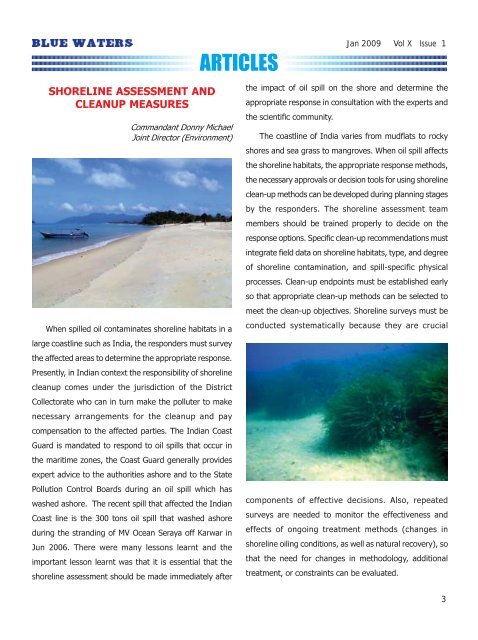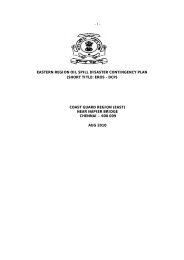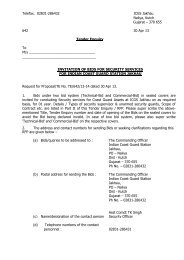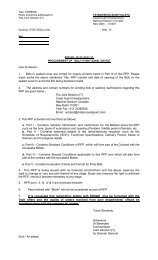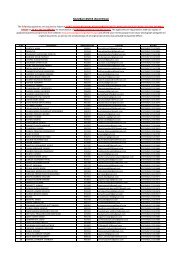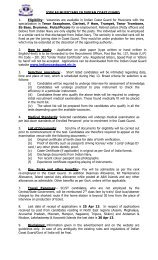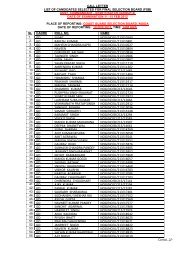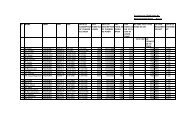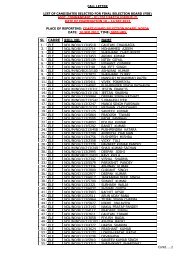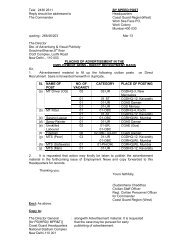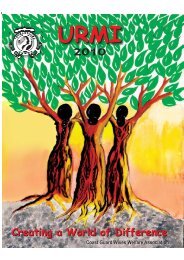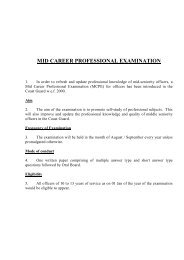Jan 2009 edition - Indian Coast Guard
Jan 2009 edition - Indian Coast Guard
Jan 2009 edition - Indian Coast Guard
You also want an ePaper? Increase the reach of your titles
YUMPU automatically turns print PDFs into web optimized ePapers that Google loves.
ARTICLES<br />
<strong>Jan</strong> <strong>2009</strong> Vol X Issue 1<br />
SHORELINE ASSESSMENT AND<br />
CLEANUP MEASURES<br />
Commandant Donny Michael<br />
Joint Director (Environment)<br />
When spilled oil contaminates shoreline habitats in a<br />
large coastline such as India, the responders must survey<br />
the affected areas to determine the appropriate response.<br />
Presently, in <strong>Indian</strong> context the responsibility of shoreline<br />
cleanup comes under the jurisdiction of the District<br />
Collectorate who can in turn make the polluter to make<br />
necessary arrangements for the cleanup and pay<br />
compensation to the affected parties. The <strong>Indian</strong> <strong>Coast</strong><br />
<strong>Guard</strong> is mandated to respond to oil spills that occur in<br />
the maritime zones, the <strong>Coast</strong> <strong>Guard</strong> generally provides<br />
expert advice to the authorities ashore and to the State<br />
Pollution Control Boards during an oil spill which has<br />
washed ashore. The recent spill that affected the <strong>Indian</strong><br />
<strong>Coast</strong> line is the 300 tons oil spill that washed ashore<br />
during the stranding of MV Ocean Seraya off Karwar in<br />
Jun 2006. There were many lessons learnt and the<br />
important lesson learnt was that it is essential that the<br />
shoreline assessment should be made immediately after<br />
the impact of oil spill on the shore and determine the<br />
appropriate response in consultation with the experts and<br />
the scientific community.<br />
The coastline of India varies from mudflats to rocky<br />
shores and sea grass to mangroves. When oil spill affects<br />
the shoreline habitats, the appropriate response methods,<br />
the necessary approvals or decision tools for using shoreline<br />
clean-up methods can be developed during planning stages<br />
by the responders. The shoreline assessment team<br />
members should be trained properly to decide on the<br />
response options. Specific clean-up recommendations must<br />
integrate field data on shoreline habitats, type, and degree<br />
of shoreline contamination, and spill-specific physical<br />
processes. Clean-up endpoints must be established early<br />
so that appropriate clean-up methods can be selected to<br />
meet the clean-up objectives. Shoreline surveys must be<br />
conducted systematically because they are crucial<br />
components of effective decisions. Also, repeated<br />
surveys are needed to monitor the effectiveness and<br />
effects of ongoing treatment methods (changes in<br />
shoreline oiling conditions, as well as natural recovery), so<br />
that the need for changes in methodology, additional<br />
treatment, or constraints can be evaluated.<br />
3


